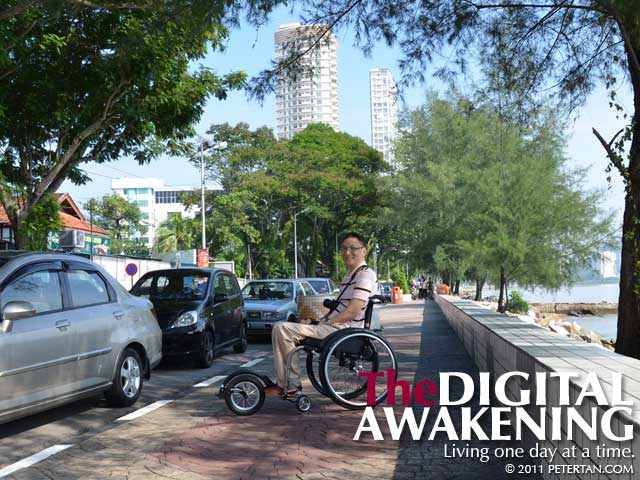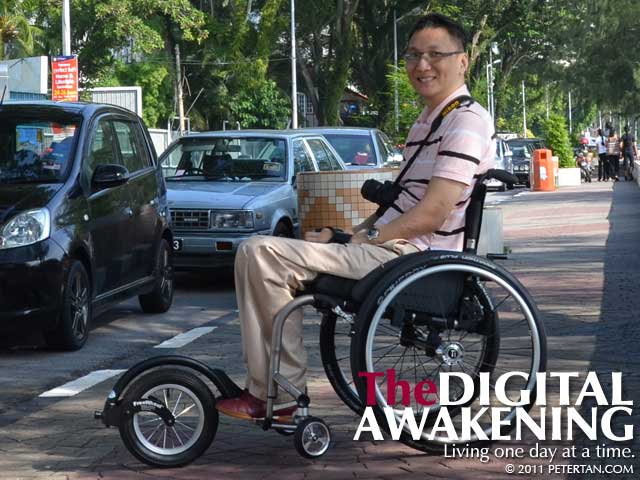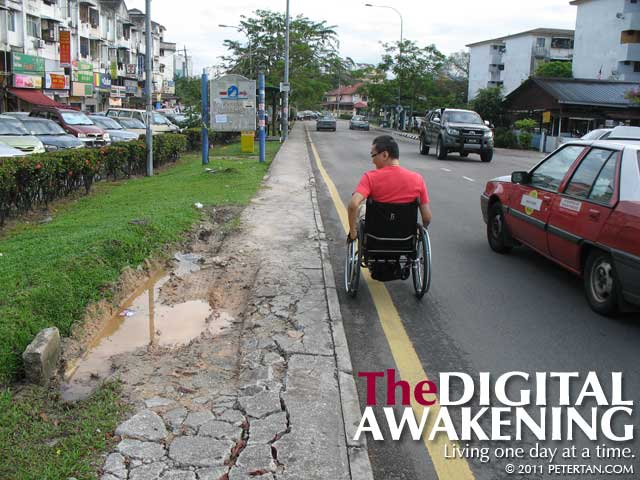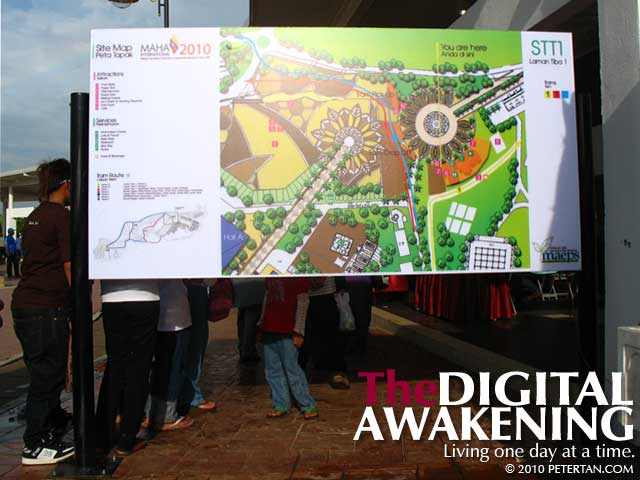The wheelchair rolls well on smooth surfaces. Roads, pavements, grass and pebbled paths is another story. The small front caster can easily get caught between bumps and cracks. Apart from making it difficult to push, they make rides bumpy which in turn causes spasms of the legs. Traversing these surfaces could quickly damage the wheelchair as well. I avoid such terrains as much as possible. For someone who likes the great outdoors, it is indeed a difficult choice for me to make.
This is the same dilemma wheelchair users all over face when we want to go off the beaten path, until the FreeWheel Wheelchair Attachment was invented, that is. When I ordered the Tilite ZRA Series 2, I got the FreeWheel shipped together with the wheelchair to save on freight charges. With the FreeWheel hooked to the footrest, going across grassy fields or sandy beaches became a breeze. This practical mechanism is the brainchild of Pat Dougherty, a wheelchair user himself, who saw the need for an easier way to get the wheelchair across challenging terrains.

Peter Tan with Tilite ZRA Series 2 and the FreeWheel Wheelchair Attachment in Gurney Drive, Penang, Malaysia.
Photo by Wuan.
The FreeWheel’s design is simple and ingenious. It consists of a 12.5 inch wheel attached to a fork. Attaching the Freewheel to the wheelchair is easy once the clamp is properly adjusted to fit the footrest. Swing the wheel out and place the clamp over the footrest. Pull the lever back and the FreeWheel is securely clamped to the footrest. Push the wheelchair forward to turn the wheel back. This lifts the front casters one inch off the ground. And all is good to go!

Closer view of Peter Tan with Tilite ZRA Series 2 and the FreeWheel Wheelchair Attachment.
Photo by Wuan.
On my recent trip to Penang, I used the Freewheel at Gurney Drive, the Botanical Gardens and several other places. The ride was certainly smoother even over rough roads and paved walkways. Moving around was a joy. In tight spaces like at the food courts, I simply unclamped the FreeWheel, stored it by attaching it to the perch fastened to the back rigidizer bar. With the FreeWheel out of the way, I manuevered around crowds with ease. With the FreeWheel, I do not have to think twice about where I can go now. Using the wheelchair when I am out and about has become less inconvenient. Truly, the FreeWheel Wheelchair Attachment is the best thing since sliced bread for wheelchair users. Thanks, Pat, for a wonderful invention.


